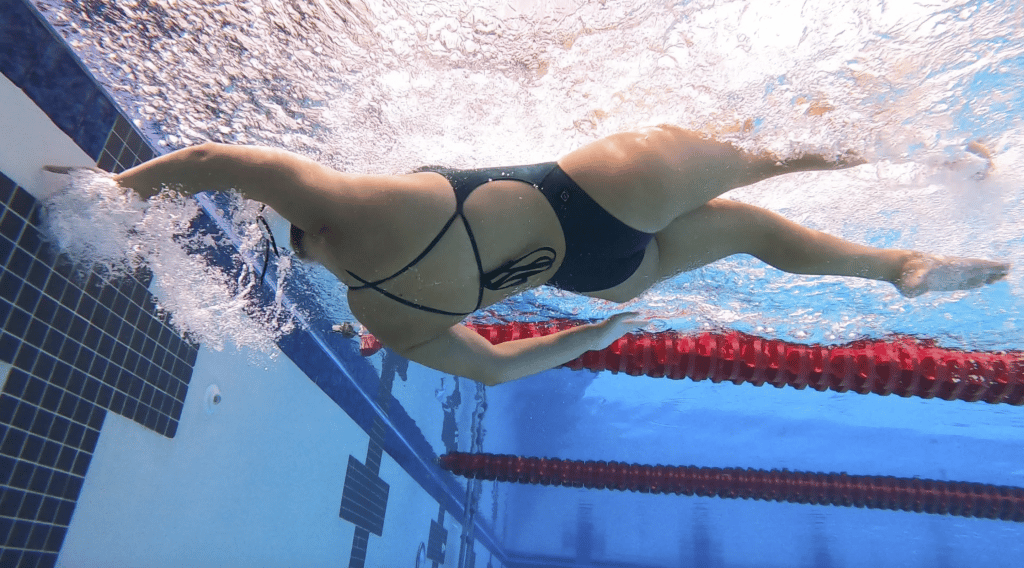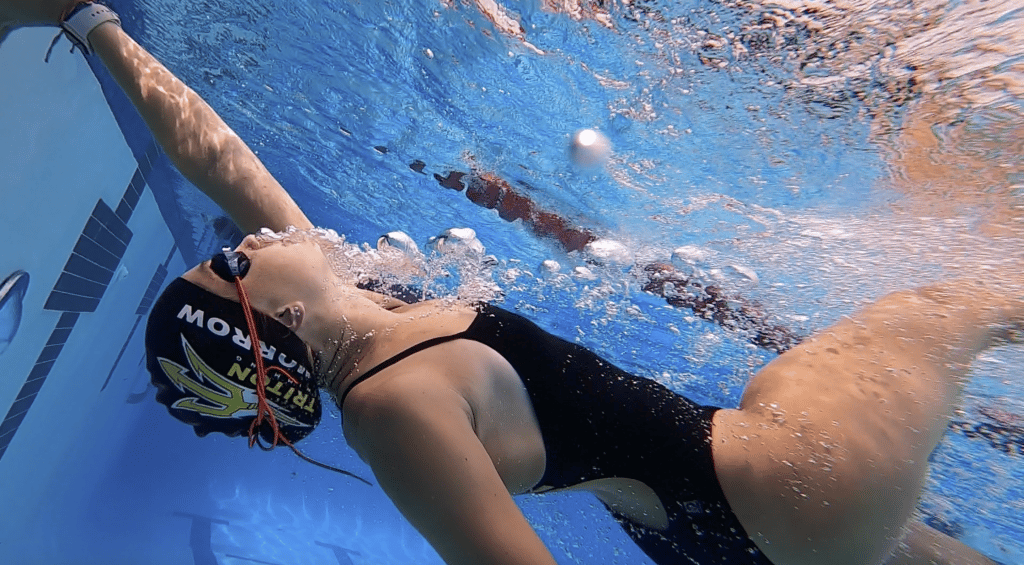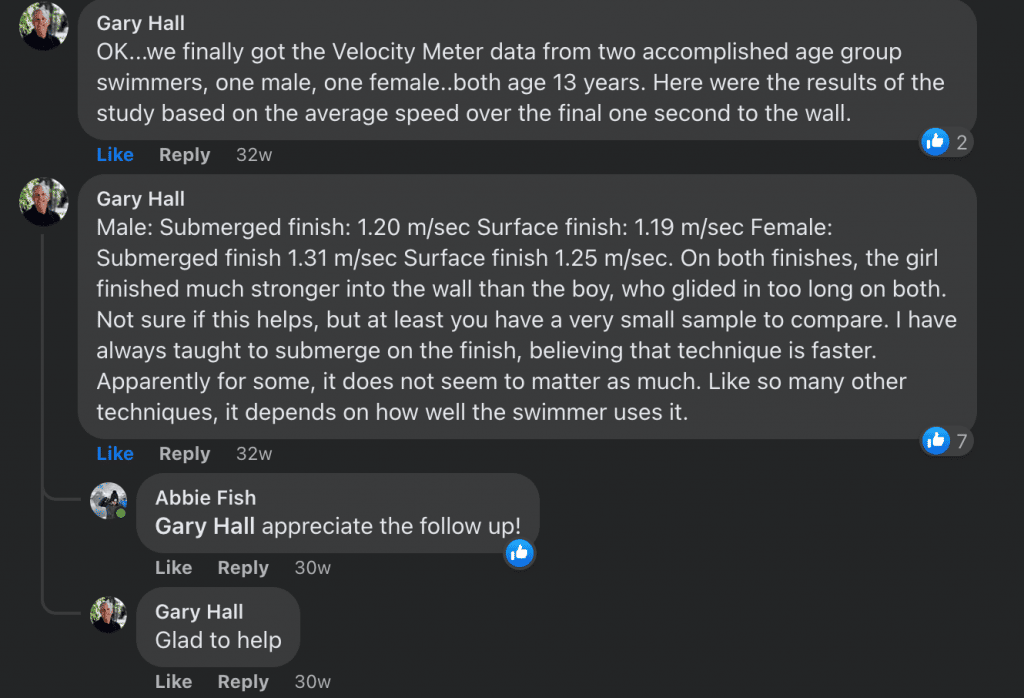I’ve had this blog on my mind for a while now, basically ever since the Justin Ress Backstroke Disqualification Overturn from World Championships. Justin’s finish caused a lot of buzz on the internet, because quite frankly – it went against the rules. My goal today is to help better categorize the styles of Backstroke Finishes and which one I’d recommend, regardless of the current rulebook.
Let’s get started!
Can you imagine being at World Championships and winning a Gold Medal – just to see a DQ up on the scoreboard? That’s exactly what happened to Justin Ress. Justin won the 50m Backstroke Final by 0.02, where he celebrated for a second, just to realize he had been DQed. And the reality is, the DQ was correct.
The official’s DQed Justin after video replay for having his whole body submerged under the water at the finish of his race.
Check out the race footage below:
According to the current rules, “Some part of the swimmer must break the surface of the water throughout the race, except it is permissible for the swimmer to be completely submerged during the turn and for a distance of not more than 15 meters (16.4 yards) after the start and after each turn.” This rule was really put into place to keep swimmers from kicking passed 15m off the wall, like they did in the 1988 Olympic Final. The rules vagueness; while still applicable to the rest of the race, doesn’t explicitly talk about the finish. And a lot of swimmers have been pushing the limits on the Backstroke finishes for some time now. With the goal of trying to minimize wave drag. It seems that there are always a few cases/races that push against the rules that ultimately force the rules to change – but is that the right way to go? Do we need controversy to inflict change? Your guess is as good as mine. I think ultimately we should fight for some wording to be added around Backstroke finishes to the current rulebook, so it is clear for all swimmers what is the legal way to finish in Backstroke, versus what is not.
The Two Styles of Backstroke Finishes:
I categorize Backstroke finishes into two main categories: Lean Back and Drop Back finishes. See the comparison video for side-by-side examples:
1.) The Lean Back Finish
The Lean Back Finish is a traditional Backstroke finish, where a swimmer stays at the surface of the water and uses the last stroke to lean back for the wall. The goal is to try and carry the same speed through all their final strokes – including the finishing stroke as they are extending their arm over their head. This type of finish can be done with a swimmer staying directly on their back – OR – leaning slightly to a side. Both styles of Lean Back finishes use a regular Backstroke Kick.
2.) The Drop Back
The Drop Back finish is the type of finish we saw from Justin Ress, but with the goal of staying legal according to the rules and keeping some part of your body above the water the entire time. This type of finish can be completed using a regular Backstroke Kick or a Dolphin Kick.
During a Drop Back finish, a swimmer should strive to drop their the head below the water line, while looking backwards with their eyes facing the wall. Dropping the head and neck below the surface helps a swimmer minimize the amount of wave drag on the body. Wave drag is directly related to how quickly a swimmer is swimming, so for higher level elite swimmers – a Drop Back finish can be advantageous, especially when they are fighting for tenths and hundredths of a second. During this style of Backstroke finish, you want to see a swimmer’s hand touching under the surface between the middle and top part of the T on the wall.
When I teach a Drop Back finish, I always teach it with as a regular Dolphin Kick that uses initiates with a Up-Kick – followed by a Single Leg Down-Kick. So it kind of becomes a separated Dolphin Kick. You will still have a swimmer preform a regular Dolphin Kick when coming into the wall, but they will keep one leg above the surface after they finish the Up-Kick and then let the other drive down into the Down-Kick creating the leg Separation. See the pictures below:


What is the BEST Backstroke Finish?
A Drop Back finish is FASTER, but we are talking only by 0.01 – 0.10 m/sec. So for younger kids (i.e. age-groupers), you may want to explore teaching them both styles of finishes but not have them execute a Drop Back finish until they are 13/14’s. A Drop Back finish can actually be more detrimental than helpful if not done correctly, similar to the Crossover Turn. Both a Crossover Turn and a Drop Back if done RIGHT is FASTER, but most of the time we see these two pieces of a race done wrong.
Gary Hall Sr. from the Race Club was also kind enough to do a small study on Drop Back vs. Lean Back finishes too after I posted the original video. This was his findings:

Conclusion:
We need some sort of change to the rules on Backstroke finishes. Also, we want to be more mindful when teaching these styles of finishes, that they are appropriate for the current age you’re coaching. Sometimes it is fun to be the ‘cool’ coach, but that doesn’t always mean it is faster.
Until Next Time,
Abbie Fish

5 Responses
Thank you very much
This is interesting given the fact that my 10yo swimmer lost the 100 back in the State champs meet by .02 with his drop back finish. Sadly.
woof yes! Sorry to hear that but those moments are teaching lessons!
Ever since implementing the lean back finish, my daughter has had soft touches, and sometimes loses places on races and about a second on time the if soft touch time is not corrected by backup timing.
Has she tried a Drop Back Finish??